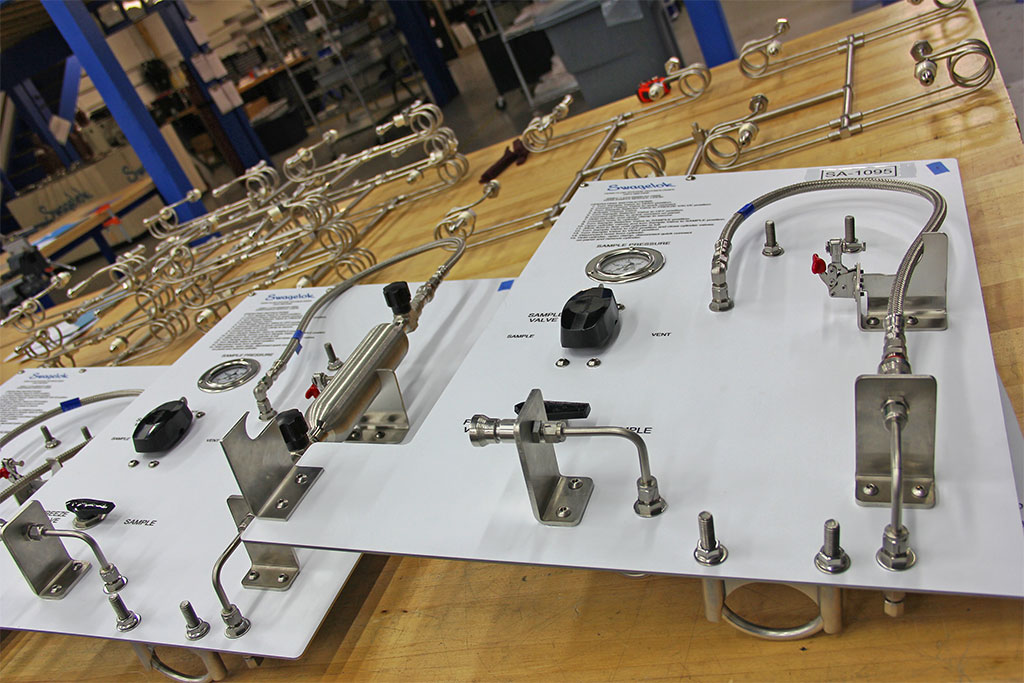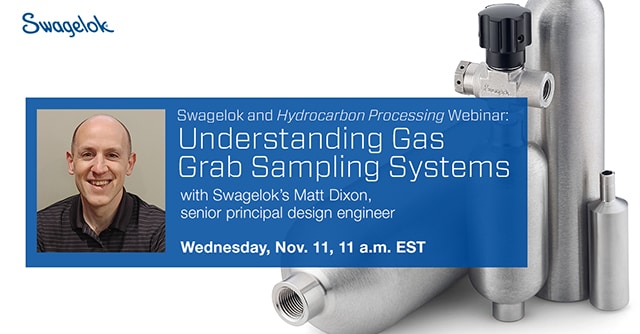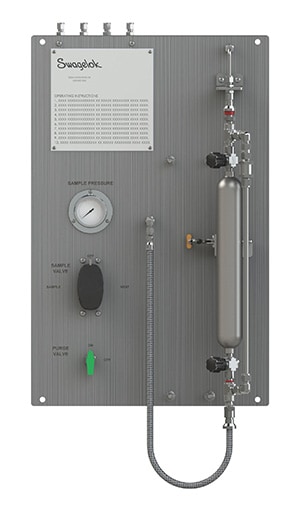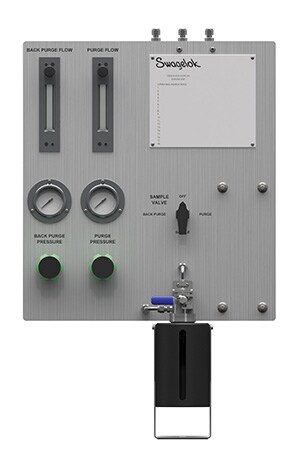Grab Sampling Introduction

A Quick Look at Grab Sampling
Fasi Khaja, Regional Field Engineer
Introduction to Sampling
Process fluids, such as liquid or gas, are measured at a molecular level to understand, analyze, and predict what they will do. Measurement gives us a better understanding of the manufacturing process which brings us many products like benzene, steel, and other chemicals.
Wondering how process conditions and quality are validated? Read on as we outline the basics of grab sampling and explain how critical sampling is.
We will be releasing a periodic blog series on grab sampling which dives deeper into concepts of liquid, volatile liquid, and gas sampling. Below is a high-level overview of some of the topics we will cover:
- Key components in grab sampling modules
- Grab sampling system maintenance
- Sample conditioning
- Sample Transport and maintaining process sample conditions during transport
suggest a blog post topic
What is Grab Sampling?
Grab sampling, also known as lab sampling or closed loop sampling, is the method of collecting a sample of process fluid typically from a pressurized system. It is one of the most common sampling techniques used for chemical samples, and it is cost-effective when compared to costly analytical instrumentation and warehousing shelters. When designing a grab sampling system that allows the collection of a physical sample from the main process line, the designer should consider these critical outcomes:
- The samples are representative
- The operators are safe
- Hazardous chemicals are not polluting the atmosphere
- The system is easy to operate
- Minimal system maintenance is required
- The potential of human error when actuating valves is eliminated
When you follow these design considerations, the possibilities for effective grab sampling systems are countless. Let's start with the basics.
Grab Sampling Basics
To achieve the desired quality measurement of a sample, the fluid collected must be representative and be transported to the lab for analysis in a timely manner without changing the chemical composition of the sample. A sample of non-hazardous and non-volatile liquids where the liquid does not react with the atmosphere is most often captured in a plastic or glass bottle. When collected in an open bottle and not maintained under pressure some chemicals from the sample may evaporate or fractionate. This affects the analysis and must be taken into consideration by the system designer.
Hazardous liquids, liquids under pressure, and all gases are typically transported in a pressurized sample cylinder.
Determining the type of container is the first step in specifying a grab sample system, and the table below shows what type of container can be used for liquid or vapor/gas.

Temperature plays a key role in sampling. Some processes operate at elevated temperatures and produce samples which can cause direct scalding and may damage the seats and seals involved in the process. It is recommended to use a sample cooler if the process temperature exceeds 140°F (60°C). A cooler will bring down the temperature of the fluid to a level that is safe for the operator to extract the sample, eliminating the risk of serious injuries such as scalding.
Does Swagelok offer a grab sampling solution?
Swagelok offers a wide variety of configurations for grab sampling solutions depending on different criteria. Pressure containing metal cylinders are found in the Swagelok Grab Sampling Module (GSM), whereas non-pressure containing glass or polyethylene bottles are found in the Grab Sample Liquid (GSL) models. Typical GSM and GSL sampling panels are pictured below.
Grab Sample Module (GSM) Grab Sample Liquid (GSL)
Gain a better understanding of gas grab sampling systems by watching Swagelok's recorded webinar with Hydrocarbon Processing.

Specifying Grab Sampling Systems
As was mentioned previously, when specifying a grab sampling system, the designer must consider various factors affecting the integrity of the sample. Be aware of the system's maximum allowable working pressure and temperature range, and carefully select safety devices like rupture discs, thermal shut off valves, and other accessory components according to the process conditions of the sample to be extracted.
Another important aspect is the material of construction. The majority of the grab sampling systems offered by Swagelok are in 316 stainless steel, however alloy 400 models are also available for some configurations. Consider surface treatments such as SilcoNert® to reduce absorption and adsorption of critical constituents of the sample onto metallic surfaces. Swagelok offers a variety of surface coatings for wetted components to prevent this from happening.
Designing a proper sampling system from scratch can be complicated and it is easy to miss critical components since no sampling standard exists. This is why Swagelok has put together an application guide on grab sampling systems and configurations so you don't have to go through the trouble of designing these systems.
The applications guide coupled with design support from Swagelok Field Engineers and fabrication from Swagelok® Custom Solutions will make your designing simple and easy.
Browse the Swagelok Grab Sampling Application Guide
Swagelok Field Engineering Support
Keep in mind, installing a grab sampling system does not guarantee a good sample. All the details of a sampling system must be considered. This includes the process sample tap (probe), the sample conditioning needed, the transport line length, the minimization of dead legs, the use of purging if required, extraction, and disposal. The GSM and GSL only address purging, extraction, and disposal. Subject matter experts are needed onsite to verify that the sample tap and transport line are adequate and dead legs are minimized.
Swagelok has always focused on providing a solution, rather than selling a component. Swagelok's global team of field engineers are highly trained and experienced individuals who understand your systems and applications and will work with you to find a solution to your problems.
Grab Sampling Evaluation
Our Swagelok® grab sampling evaluation and advisory services team can utilize our industry expertise in analytical instrumentation system design to help you improve operational performance, eliminate potential safety and environmental concerns, and achieve more representative samples on a regular basis.
The evaluation helps us understand the existing system and identify what common design flaws are contributing to poor, non-representative samples. We look at the four functions listed below and then provide recommendations on how to improve the system.
1. Safety (S) - eliminating dangerous hazards to the operator. A high rating for safety represents elevated risks to operators.
2. Environment (E) - minimizing impact on the environment. A high rating for environment represents risk of pollution.
3. Quality (Q) - maintaining a sample that is representative of the true process conditions. A high rating for quality represents increased probability of collecting a less representative sample.
4. Functionality (F) - ease of use for the operators. A high rating for functionality represents a system design that is difficult for personnel to operate.
To request more detailed information or if you are facing a problem at your plant, please let us know.
Need help with a specific application?
Swagelok Central Ontario | Atlantic Canada's Virtual Round Table connects you with our local subject matter experts.
sign up for a virtual round table
We look forward to sharing more knowledge with you. To stay up to date on our latest blog posts, please subscribe at the link below.
1. Waters, T, 2013. "Industrial Sampling System".



